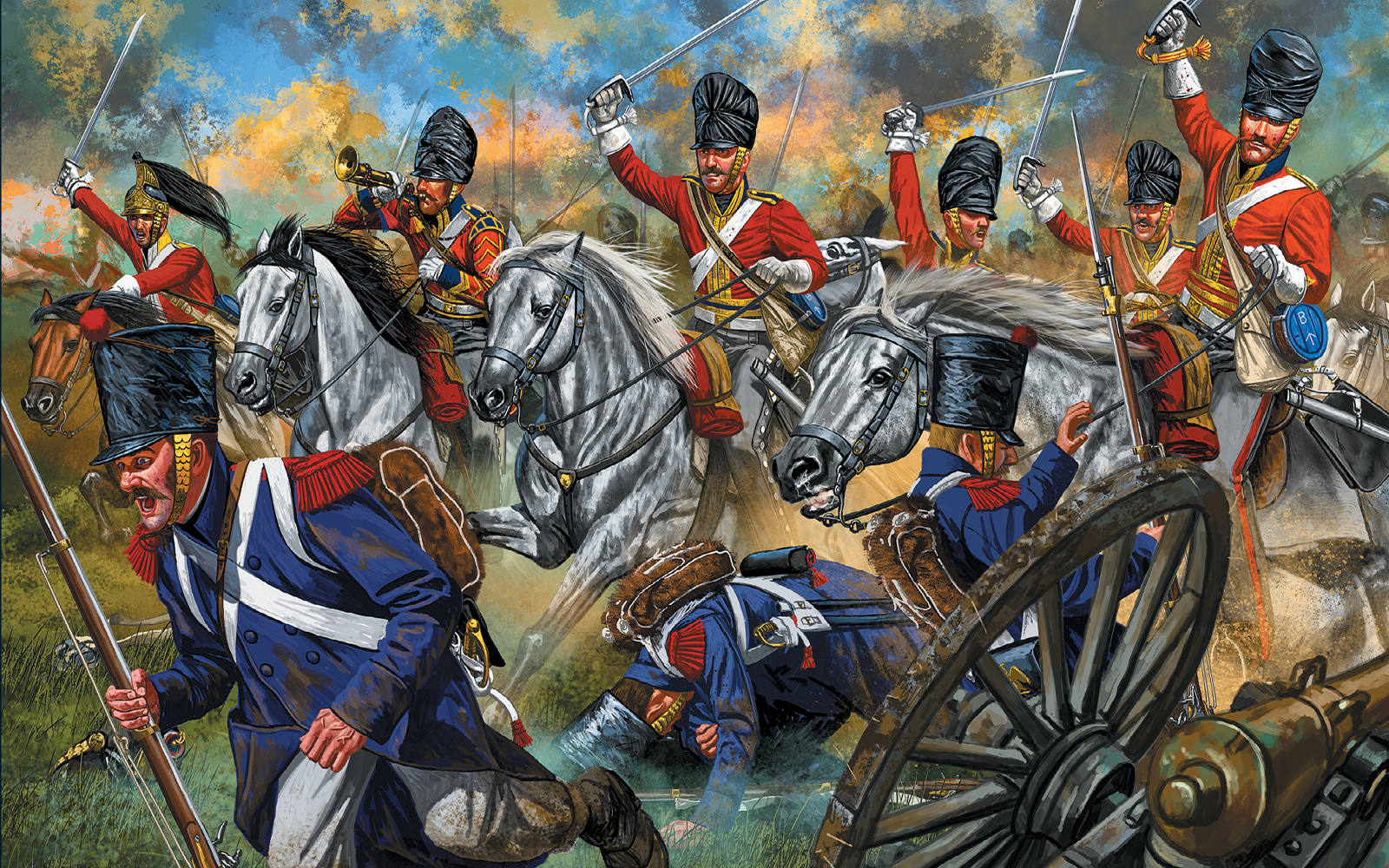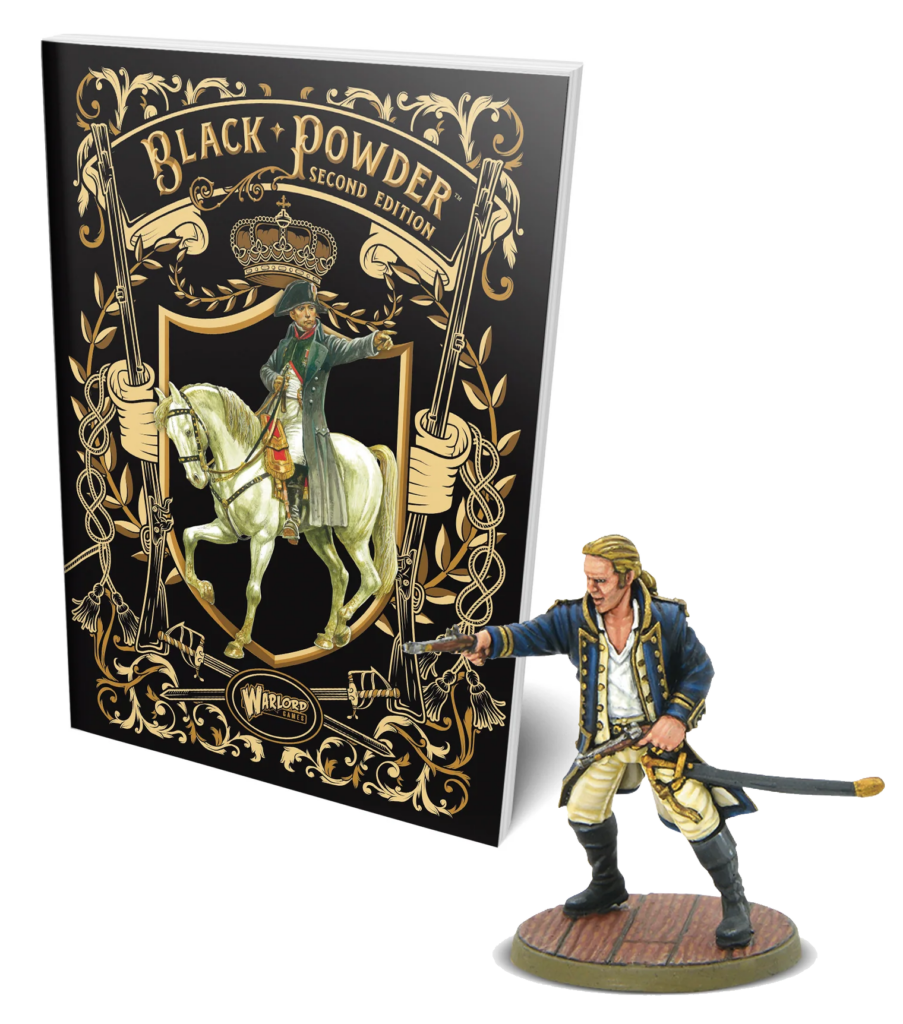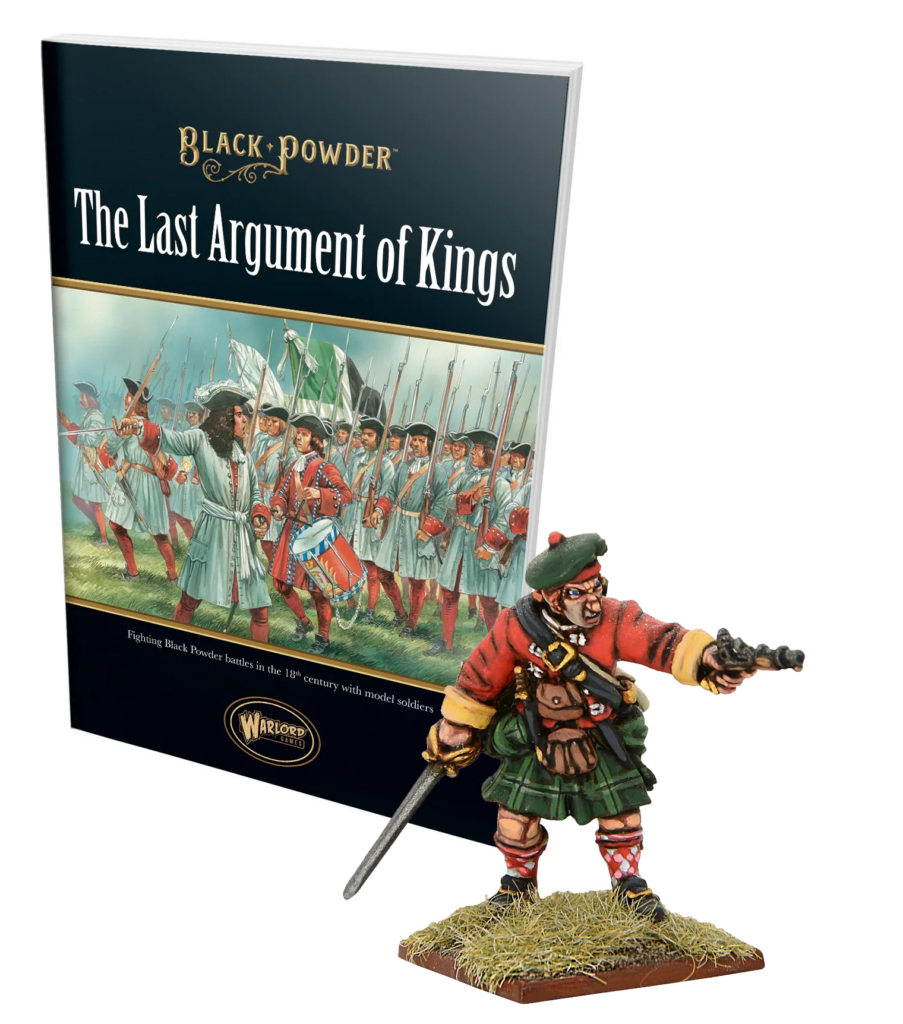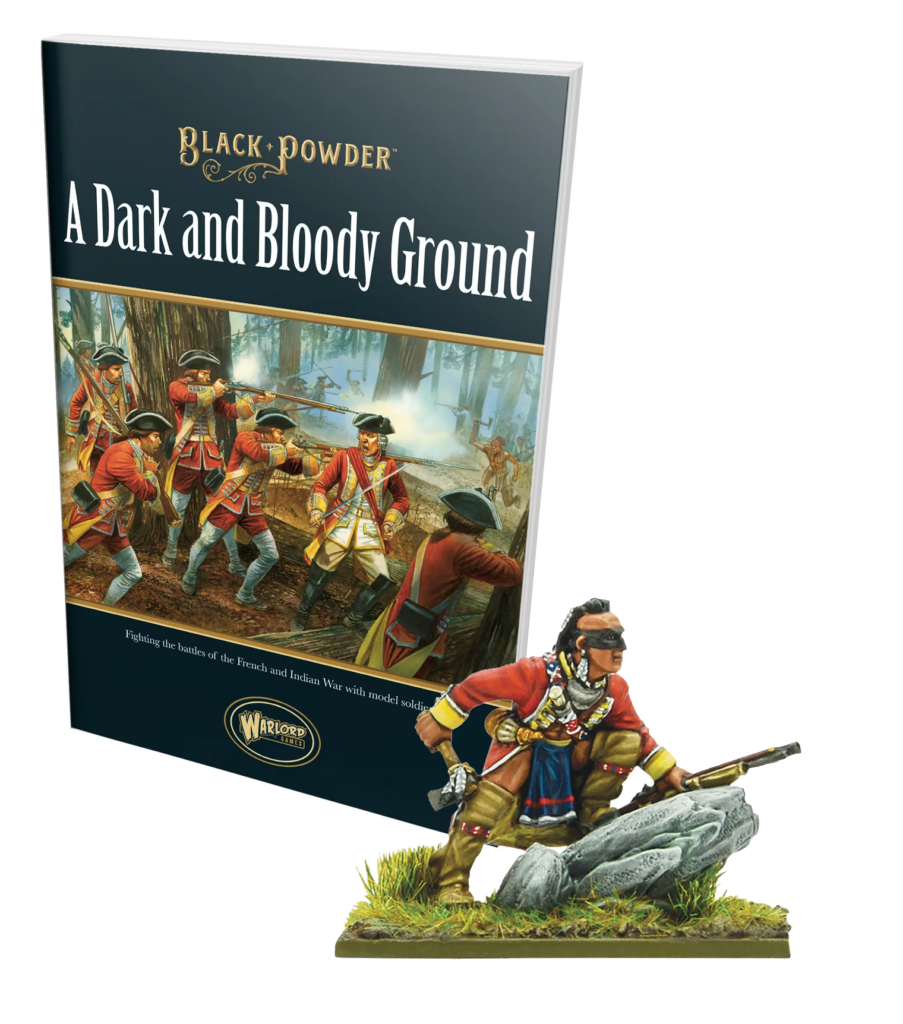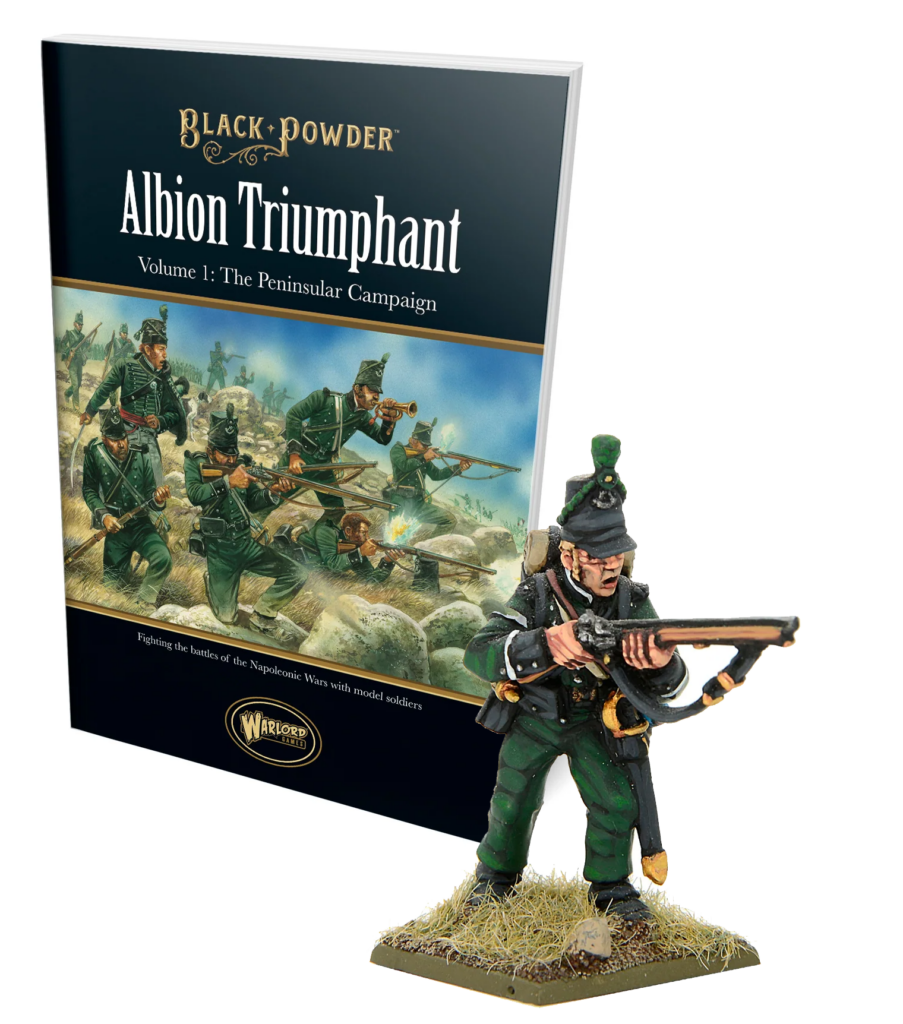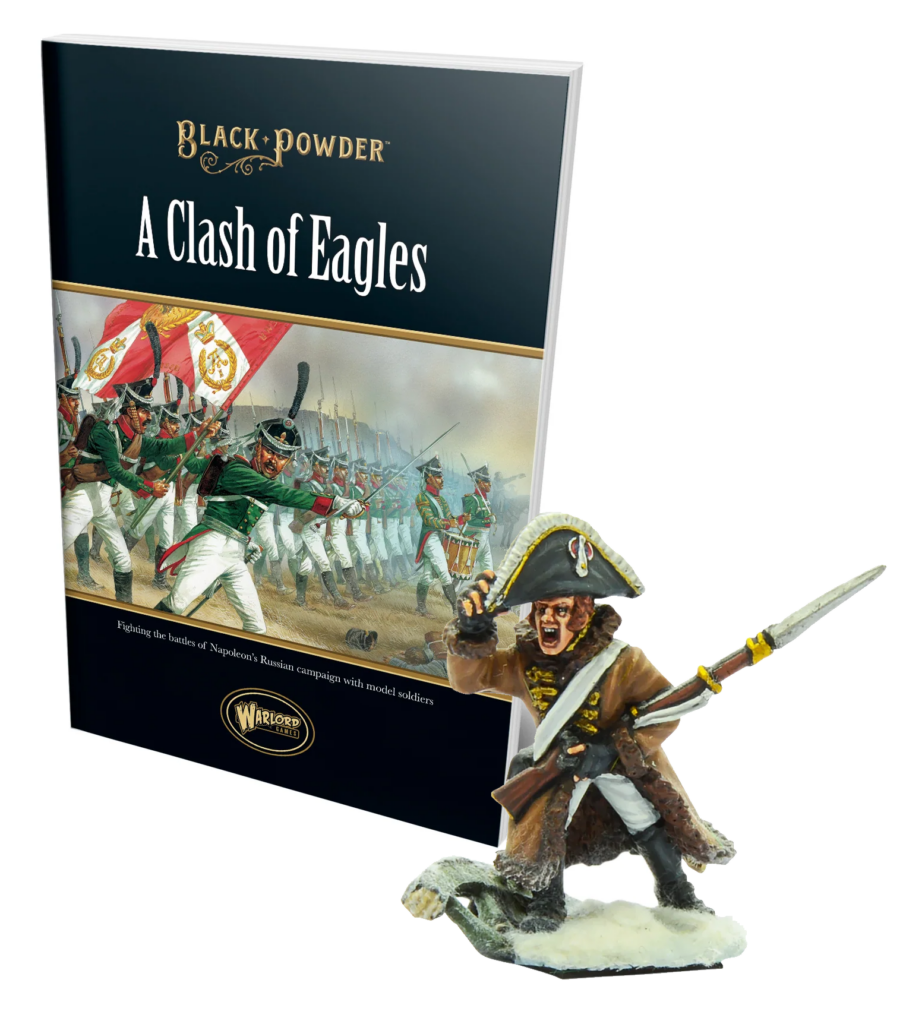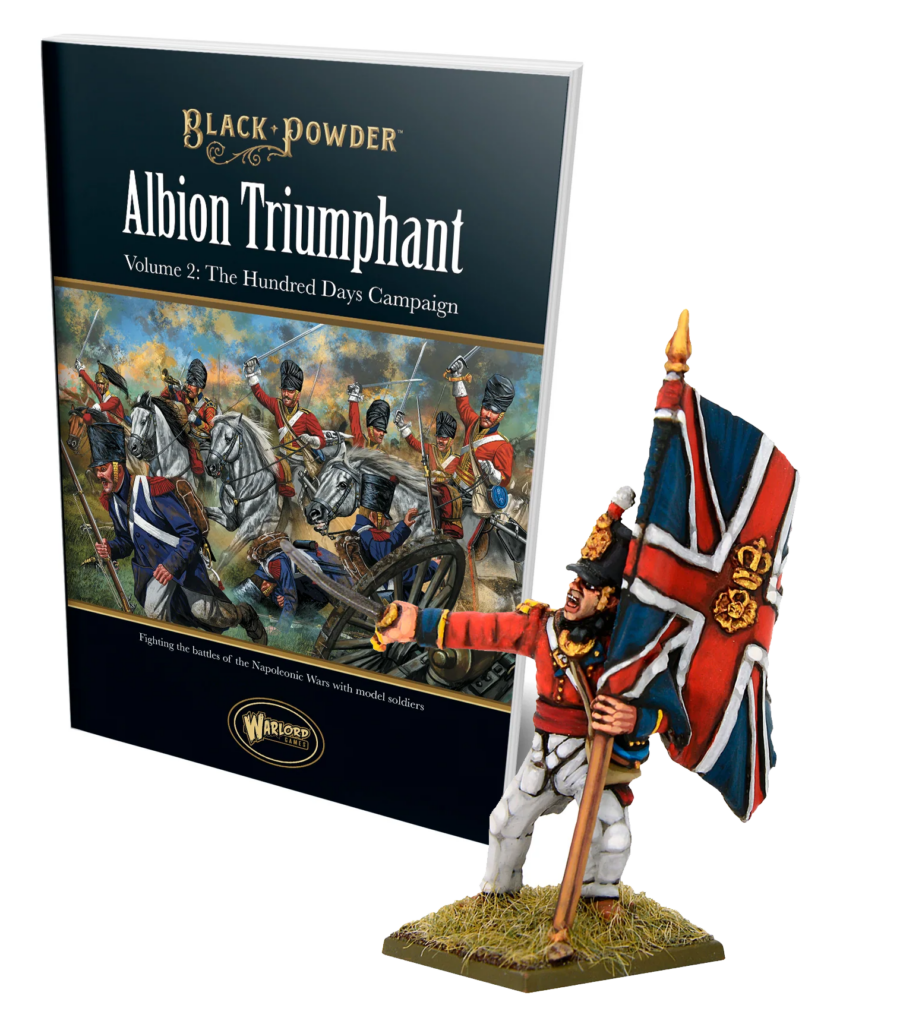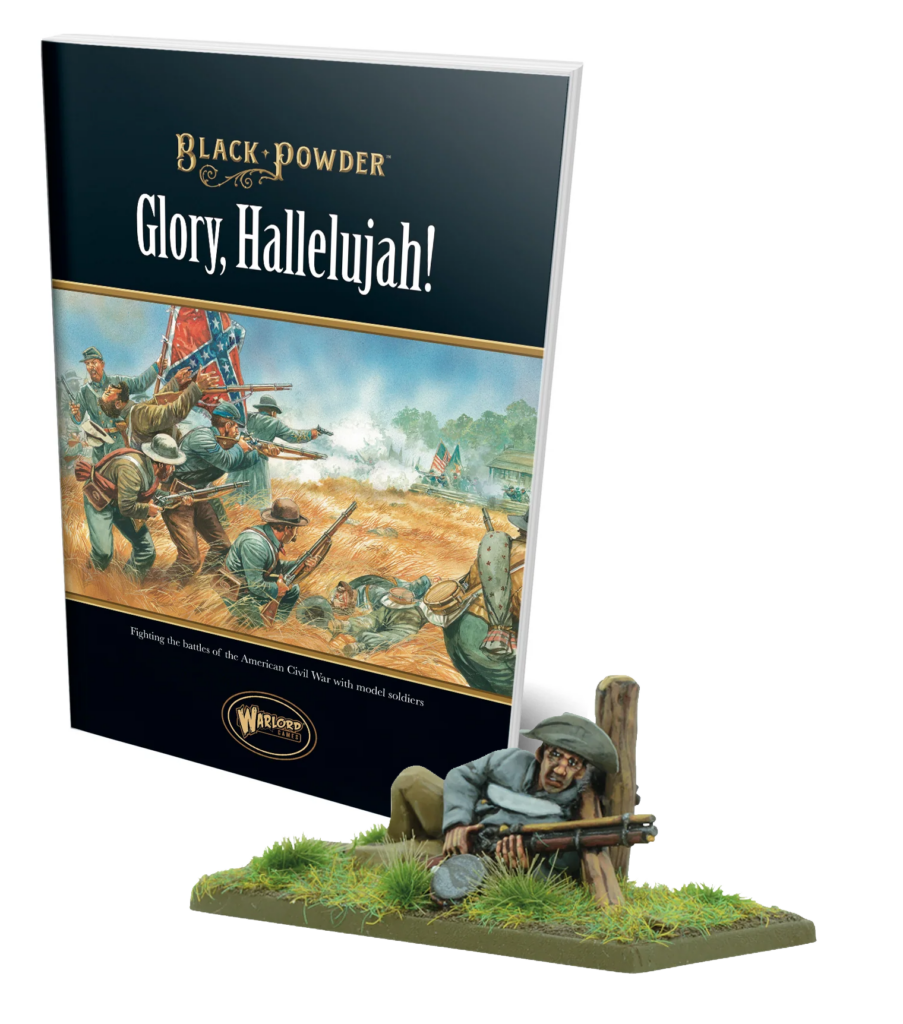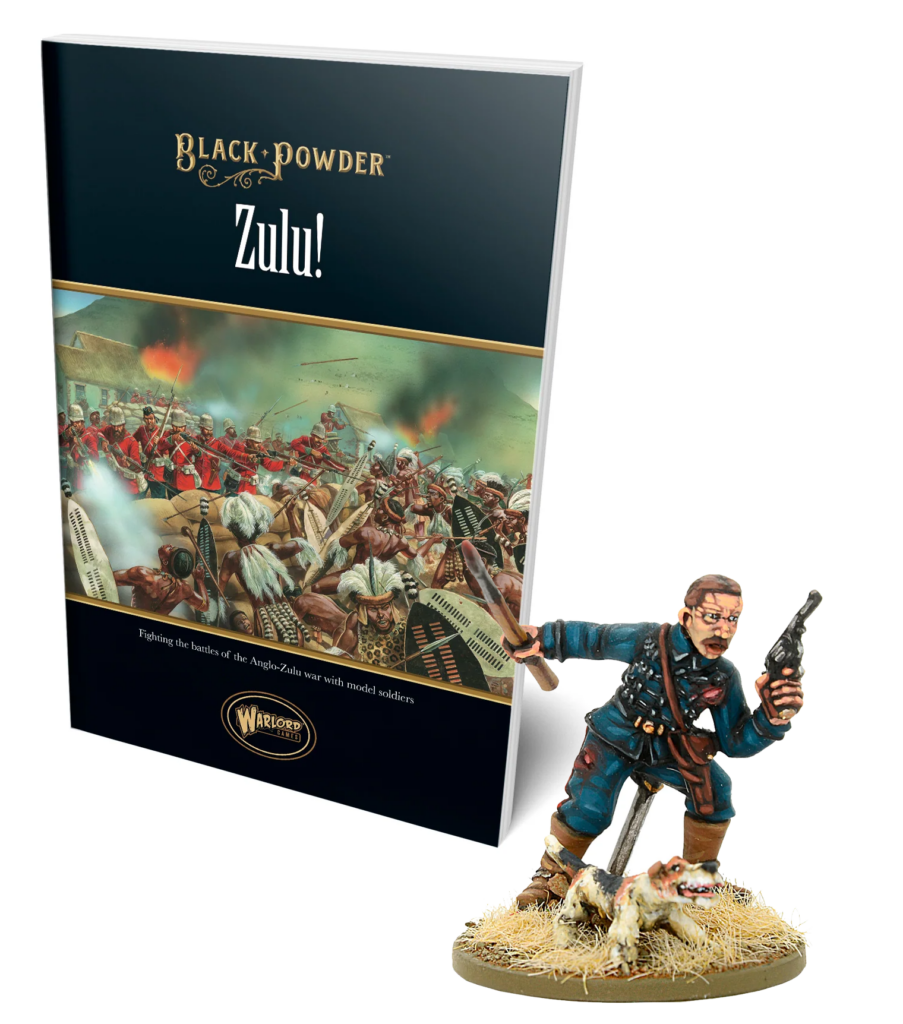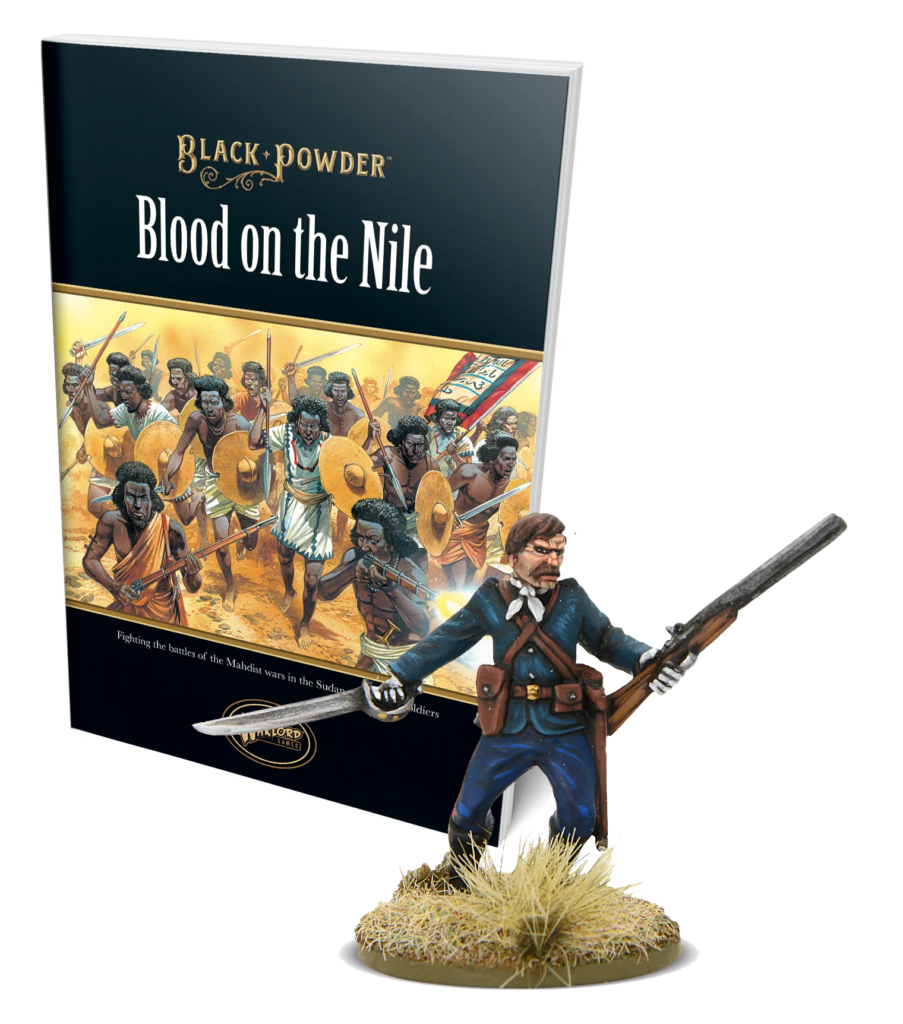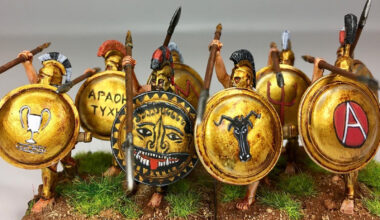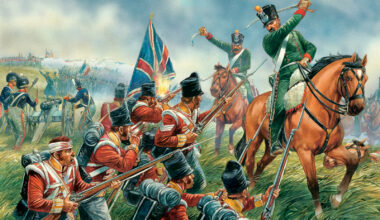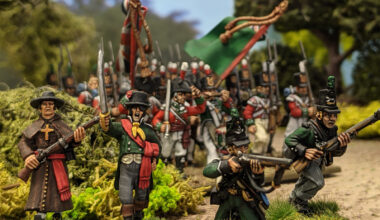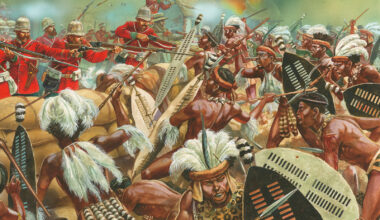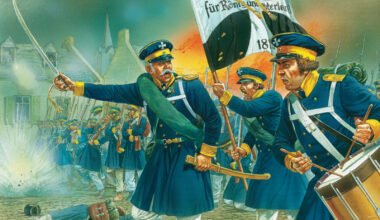Black Powder allows you to become the tabletop general of serried ranks of infantry, swift cavalry and thundering cannons. The system allows you to revisit some of the most iconic battles of all time on the tabletop. Since Black Powder’s inception, the range has expanded, with numerous supplements and ranges tailored to specific periods and theatres of warfare, detailed below in chronological order. Rest assured this isn’t a complete list, as more supplements are on the way to expand the possibilities yet further! Keep your eyes peeled on the Warlord Games newsletter for word of these!
We would be remiss if we didn’t kick off with the main Black Powder rulebook!
Black Powder Rulebook
As well as providing for the fundamentals of warfare such as the command of troops, movement on the battlefield, the effects of musketry and artillery, and the role of morale, Black Powder includes further rules and examples to allow you to recreate famous battles with your model soldiers.
Covering almost 200 years of military history, Black Powder can broadly be defined by its namesake – times when warfare was conducted with muskets and cannons, and gunpowder was the most sophisticated invention of the battlefield. We stretch this definition slightly to include the latter half of the nineteenth century. The game, therefore, encompasses 1701 to 1898, from the War of the Spanish Succession to end of the Second Sudan War.
Last Argument of Kings
The development of the flintlock musket at the dawn of the 18th century heralded a drastic change in the way wars were fought in Europe. By the time of the Seven Years’ War, practically all European armies adhered to similar organisation and principles. All of Europe seemed to have been at war at one time or another during this period – with conflicts stretching across continents. This period proved to be the swan song of those who wore crowns and commanded grand armies in their fights for lands, wealth and indeed succession, before the end of the century when parliaments became the real power. These were the Last Arguments of Kings.
Period: 1700-1763
Example Conflicts: The War of the Spanish Succession (1701-1714), The Wars of the English Succession (1690-1746), The Seven Years’ War (1756-1763)
Start Here: Marlborough’s Wars Starter Army, Grand Alliance Infantry Brigade, Sun King Cavalry Brigade
A Dark & Bloody Ground
Fought between 1754 and 1763, this conflict saw the French and British empires fighting for dominance of Canada and North America. The European armies had to overcome harsh weather conditions and the equally unforgiving wilderness before fighting battles and skirmishes in which little quarter was asked for or given.
Period: French and Indian War (1754-1763)
Example Battles: The Battle of Fort William Henry (1757), Raid of Fort Duquesne (1758), Battle of Signal Hill (1762)
Start Here: British Regular Infantry, French Regular Infantry, Woodland Indians War Party
Rebellion!
In 1775 the simmering resentment of American colonists exploded into a bloody rebellion. Beginning in Boston, the conflict eventually stretched from Canada in the north to Florida in the south and lasted eight gruelling years. On one side stood the King’s redcoats and settlers loyal to their sovereign, later joined by regiments of ‘Hessian’ mercenaries. Ranged against them was a citizen army under the inspirational leadership of George Washington, supported by militia and eventually French troops eager to embarrass their old foe. Both sides were forced to learn new tactics for fighting in the wild terrain of North America in a conflict that saw heroism and ineptitude in equal measure.
Period: American War of Independence (1776-1783)
Example Battles: Bunker Hill (1775), Bemis Heights (1777), Guilford Courthouse (1781)
Start Here: “Liberty or Death” American War of Independence Battle Set, American War of Independence British Army Starter Set, American War of Independence Continental Army Starter Set
Albion Triumphant (Volume One: The Peninsular Campaign)
Albion Triumphant, as the title suggests, focuses mainly on Britain’s war with France during the Napoleonic period. Although other nations were involved (and are covered in places of overlap), the lion and the Cockerel were the super-powers of the early 19th Century it is only fitting that these two be the focus. Napoleonic armies fought differently to prior armies; with the French being ill-equipped to supply its forces in a protracted conflict.
Period: Napoleonic Wars: The Peninsular Wars (1806-1814)
Example Battles: The Battle of Vimeiro (1808), The Battle of Talavera (1809), The Battle of Salamanca (1812)
Start Here: Napoleonic British Starter Army (Peninsular Campaign), Napoleonic French Starter Army (Peninsular Campaign), Bad Blood at Grijo – The Peninsular Veterans Collection
A Clash of Eagles
Referred to as the Second Polish War, Napoleon launched a disastrous campaign in Russia in 1812. This conflict saw the ‘army of twenty nations’, some 600,000 men, defeated over a period of just five months, and arguably was the catalyst of Napoleon’s eventual downfall.
Period: Napoleonic Wars: The Second Polish War, Russia 1812
Example Battles: The Battle of Saltanovka (23rd July 1812), The Battle of Gorodetschna (12th August 1812), The Battle of Borodino (7th September 1812),
Start Here: Napoleonic French Starter Army (Waterloo Campaign), Napoleonic Russian Starter Army, Pavlovsk Grenadier Regiment 1789-1815
Albion Triumphant (Volume Two: The Hundred Days Campaign)
Following the crushing defeat of Napoleon’s Grande Armée in the Russian campaign of 1812, and continued bitter fighting, Napoleon (after a brief abdication) needed to act swiftly to eliminate the outnumbering armies of Britain and Prussia. He enacted an audacious plan to invade Belgium and sweep away the armies of Wellington and Blücher. For his part, Napoleon lacked the qualitative troops of experience he had wielded so effectively in the Peninsular Campaign, suffering from a distinct lack of veterans, many of which had been deployed to the Americas in the War of 1812. Albion Triumphant Volume 2 chronicles the latter days of the Hundred Days Campaign, culminating in possibly the most famous battle of all time, Waterloo.
Period: Napoleonic Wars: The Hundred Days Campaign (1815)
Example Battles: Quatre Bras & Ligny (16th June 1815), Hougoumont (18th June 1815), Waterloo (18th June 1815)
Start Here: Waterloo Black Powder 2nd Edition Starter Set, Le Haye Sainte Battle Set, Napoleonic British Starter Army (Waterloo Campaign)
The Crimean War
The Crimean War was fought between October 1853 and March 1856. Imperial Russia was keen to expand into the ailing Ottoman Empire, and this aggression drew in Britain and France, intent on maintaining the balance of power in Europe, and restoring their national prestige, respectively. The Kingdom of Sardinia, keen to gain recognition in the eyes of Britain and France, joined the alliance, while Greece attempted unsuccessfully to make gains from the Ottoman Empire.
The war saw the great powers of the age funnel men and materiel into a barely ordered organisational nightmare, punctuated by slaughters that presaged those of the American Civil War less than a decade later.
It also saw ancient foes in Britain and France fighting alongside each other less than half a century after the Napoleonic Wars tore across the Continent. Officers who had faced each other in the first half of the century now found themselves comrades in arms.

Period: Crimean War (1853 – 1856)
Example Battles: The Battle of the Alma (1854), Battle of Balaclava (1854), Battle of the Chernaya (1855)
Start Here: British Line Infantry Regiment, Crimean War British Lancers, Crimean War British Hussars, Crimean War Russian Line Infantry
Glory Hallelujah!
In 1860 Abraham Lincoln was elected President of the fledgeling United States of America. Years of seething hostility between the North and South boiled over as the Southern States saw Lincoln’s election as a direct threat to their rights, and the nation fell apart as a new Confederacy was formed in the South. The Confederacy, striving to assert its independence, opened fire on the Northern troops occupying Fort Sumter in Charleston Harbour on 12th April, 1861. Determined to preserve the Union, Northern troops headed south and on to Richmond! Over the next four terrible long years, American armies tramped across American fields and burnt American farms as Americans killed Americans in a war the likes of which the nation had never seen before. The epic battles fought during the American Civil War proved beyond all doubt that war can be ‘all hell’.
Period: American Civil War (1861-1865)
Example Battles: First Battle of Bull Run (1861), Battle of Shiloh (1862), Battle of Five Forks (1865)
Start Here: American Civil War Collection, American Civil War Artillery Battalion, American Civil War Zouaves Brigade
Zulu!
The Anglo-Zulu War was fought in 1879 between the British Empire and the Zulu Kingdom. Following the successful introduction of federation in Canada, it was thought that similar successes might be found in South Africa if coupled with military campaigns. The Kingdom of Zululand found the British issued ultimatum, that required the disbanding of the Zulu army and the abandonment of certain traditions, unacceptable. Thus, the Anglo-Zulu war erupted, with the resultant bloody battles attaining legendary status.
Period: Anglo-Zulu War (1879)
Example Battles: Battle of Isandlwana (1879), The Defence of Rorke’s Drift (1879), The Battle of Khambula (1879), The Battle of Gingindlovu (1879)
Start Here: Rorke’s Drift Battle Set, British Starter Army, Zulu Starter Army
Blood on the Nile
They charged out of the shimmering desert, thousands of fanatical warriors dressed in white, brandishing fearsome weapons. These were the Mahdi’s men and a British soldier’s worst nightmare. The Mahdi had emerged from the wilderness to lead a rebellion against the Egyptian government in Sudan. His armies overwhelmed the Egyptians and trapped Governor Gordon in Khartoum. The British launched a relief expedition, but it arrived too late. Such an insult to the Empire could not go unpunished, and the British returned to crush the Mahdists. Sudan then came under British Imperial control, but, like shifting sands, history could have turned out very differently.
Period: Mahdist Revolt (1884)
Example Battles: Battle for Khartoum (1884), First Battle of El-Teb (1884), Second Battle of El-Teb (1884)
Start Here: Mahdist Revolt: Mahdist Ansar (1884), British Infantry Afghanistan and Sudan (1877-1885)
